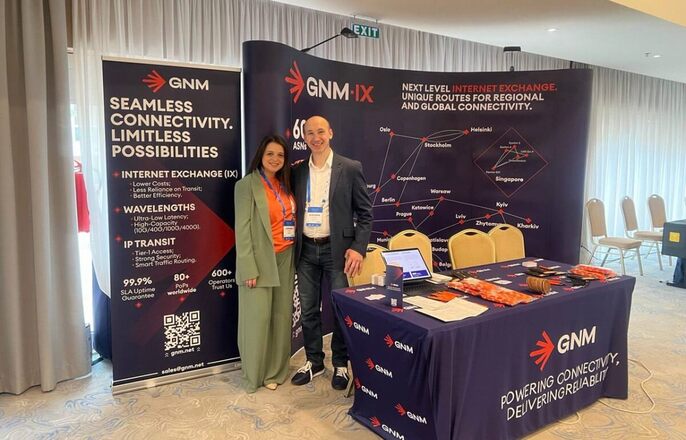
The traditional model of cybersecurity, which relies heavily on securing the perimeter of trusted internal networks, is increasingly viewed as inadequate in the face of modern cyber threats. Enterprises today confront sophisticated adversaries capable of exploiting vulnerabilities and compromised credentials, effectively bypassing perimeter defenses.
As a result, a growing number of organizations are shifting towards a zero trust security model – a paradigm that eliminates the concept of implicit trust within a network and instead requires verification of every access request, regardless of user location or device.
The zero trust approach, originating from concepts introduced by Stephen Paul Marsh in the 1990s, focuses on securing individual users, devices, applications, and data flows. Its core principle, “never trust, always verify,” underscores a proactive security posture that treats every interaction as potentially hostile. Unlike conventional models that presume trust based on network location, zero trust mandates continuous authentication, authorization, and context-aware validation for every access attempt.
In practical terms, zero trust implementation involves an intricate web of technologies and policies. Identity and access management (IAM), multi-factor authentication (MFA), endpoint security, and micro-segmentation form the foundation of a zero trust environment. These components work together to enforce strict access controls and reduce lateral movement within the network – a critical step in preventing breaches.
Consider a multinational enterprise with employees accessing sensitive financial data stored in cloud infrastructure. In a traditional setup, an employee might authenticate via a virtual private network (VPN) using only their credentials. Under zero trust, that same employee would face a layered verification process: MFA using a password, a mobile device, and biometric data; a device posture assessment ensuring compliance with corporate security policies; and contextual checks like location and time-of-access validation.
Access is granted through secure, encrypted tunnels facilitated by software-defined perimeters (SDPs) and monitored continuously for anomalous behavior. Tools like user and entity behavior analytics (UEBA) and next-generation firewalls (NGFWs) help detect and respond to potential threats in real time. If the user’s actions deviate from established norms – for example, by attempting to access large volumes of data or restricted files – automated systems flag or block the session.
This model stands in stark contrast to the “castle-and-moat” mentality of traditional security. In the old paradigm, once inside the network, users often had free reign. Today’s distributed, cloud-based, and remote work environments demand a model where every access point is scrutinized, no matter where it originates.
Methodical, Staged Approach
Core principles of zero trust include continuous verification, the enforcement of least privilege access, and the assumption that breaches are inevitable. This philosophy not only limits the blast radius of any potential attack but also aligns well with compliance frameworks like GDPR, HIPAA, and PCI DSS by enforcing rigorous control over data access and usage.
Implementing zero trust requires a methodical, staged approach. Organizations must begin with a thorough assessment of their current security landscape, including asset inventories, user roles, threat modeling, and existing vulnerabilities. Critical data and applications are identified, and policies are crafted to govern who can access them, under what conditions, and using what devices.
Robust identity verification is at the heart of zero trust. Companies must deploy IAM solutions that support MFA and adaptive authentication, ensuring that credentials alone are not sufficient for access. Role-based (RBAC) and attribute-based access control (ABAC) mechanisms further refine permissions, granting access only to those with legitimate business needs. Just-in-time (JIT) and privileged access management (PAM) tools add another layer by limiting the duration and scope of access rights.
Micro-segmentation, another key component, involves dividing the network into isolated zones. Each segment is governed by its own security policies, reducing the risk of lateral movement if a breach occurs. Software-defined networking (SDN), virtual LANs (VLANs), and host-based firewalls help implement these boundaries effectively.
Continuous monitoring is essential. Security information and event management (SIEM) systems, along with UEBA and network traffic analysis tools, provide visibility into system activity and user behavior. Integrating threat intelligence feeds enhances detection capabilities, while automation platforms like security orchestration, automation, and response (SOAR) streamline incident response workflows.
Automation plays a significant role in zero trust by enabling consistent policy enforcement and reducing the administrative burden. Tasks such as software updates, compliance checks, and access revocations can be managed via infrastructure-as-code (IaC) and DevSecOps practices.
Zero Trust Use Cases
Use cases for zero trust extend across industries. In remote work scenarios, it secures access from diverse devices and locations, surpassing traditional VPNs in both security and performance. In cloud environments, zero trust ensures consistent enforcement of security policies regardless of deployment model. For organizations managing sensitive data – such as healthcare providers and financial institutions – zero trust provides encrypted access, strict data loss prevention, and real-time monitoring. Even insider threats can be mitigated through behavior analytics and granular access controls.
Zero trust also strengthens supply chain security. With cyberattacks increasingly targeting third-party vendors, zero trust enforces the same stringent policies for external partners as it does for internal users. Access is granted strictly on a need-to-know basis, and all activity is logged and monitored for anomalies.
Drawbacks Zero Trust Approach
Despite its many advantages, zero trust is not without drawbacks. Implementation can be complex and costly, particularly for organizations with legacy infrastructure. Integrating older systems with modern authentication protocols and access control mechanisms may require substantial reengineering. The user experience can also suffer if verification procedures are overly rigid or poorly implemented.
There are operational challenges too. Zero trust requires continuous policy updates, system monitoring, and a well-trained IT staff capable of responding to dynamic threats. Cultural resistance may emerge as employees adjust to more frequent authentication steps and reduced access privileges. Selecting the right combination of tools and vendors is also crucial to avoid vendor lock-in and ensure interoperability across environments.
Nonetheless, these hurdles can be addressed with a phased implementation strategy and a focus on user education. Beginning with high-risk assets, organizations can gradually expand zero trust policies across departments. Regular training sessions and clear communication help build a culture of security awareness, smoothing the transition for employees.
Ultimately, zero trust represents a paradigm shift in cybersecurity – one that acknowledges the distributed, cloud-based reality of modern business operations. By assuming that no user or device is inherently trustworthy and requiring continuous verification, zero trust provides a robust defense against today’s most advanced cyber threats.
Its principles align with regulatory demands, offer enhanced visibility, and support business agility. For companies committed to securing their digital assets in a volatile threat landscape, zero trust is not just a technical upgrade; it’s a strategic imperative. As enterprises continue to adapt to hybrid work models and expand their digital footprints, the importance of a zero trust security framework will only grow. In the face of increasing attack sophistication and regulatory pressure, organizations that embrace zero trust early are better positioned to protect their operations, reputation, and bottom line in the years ahead.




